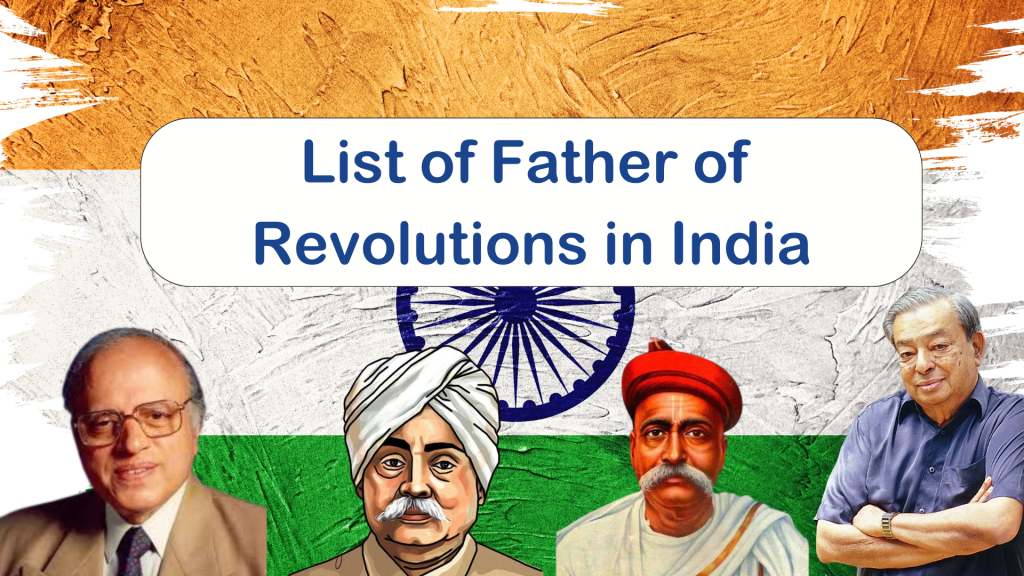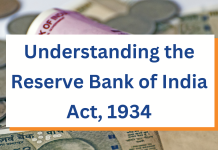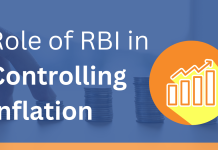The journey of transformation in India has been punctuated by numerous revolutionary movements that have rewritten the socio-economic, cultural, and industrial landscapes. These revolutions, fueled by visionary leaders and reformers, left their imprint on many sectors, from agriculture and industry to science and technology. Each of these revolutions was in response to some compelling challenges, looking forward to the betterment of the country and the quality of life for millions. For example, the Green Revolution, spearheaded by Dr. M.S. Swaminathan, ushered in a revolution in agriculture with high-yielding varieties and modern methods of farming so that food security could be guaranteed to an increasingly large population. Likewise, the White Revolution, led by Dr. Verghese Kurien, transformed India into the largest milk producer in the world, empowering rural farmers and rewriting the dairy industry.
These movements, often driven by a singular vision of change, have not only propelled economic growth but also fostered social equality and self-reliance. They have served as milestones in India’s journey towards modernization, helping the country achieve global recognition in various fields. The contributions of these revolutionary leaders, often referred to as the “Fathers of Revolutions” in their respective domains, have been instrumental in laying the foundation for India’s progress. This blog delves into the lives and contributions of these luminaries, shedding light on their enduring legacies and the transformative impact of their initiatives on India’s development. By understanding these revolutions, we gain insight into the driving forces behind India’s socio-economic evolution and the visionary leadership that made them possible.

Who is the Father of Indian Revolutions?
Bal Gangadhar Tilak is highly regarded as the “Father of Indian Revolutions,” a title which depicts his enormous contribution to the fight for freedom of India and socio-economic transformation. In fact, Tilak’s revolutionary ideology was the bedrock upon which Indian Swaraj, or self-rule, was based, an idea that became the core of the independence movement. Mahatma Gandhi called him the “Maker of Modern India,” while Jawaharlal Nehru referred to him as the “Father of Indian Revolutions,” in reference to his contributions to the awakening of national consciousness.
Tilak’s unwavering commitment to India’s liberation inspired movements that sought to challenge British colonial rule and bring about fundamental changes in the socio-economic fabric of the nation. Through his fiery speeches and writings, especially in publications like Kesari and The Maratha, he rallied people across regions and classes. His clarion call, “Swaraj is my birthright, and I shall have it,” became a rallying cry for millions, solidifying his legacy as a revolutionary leader.
Understanding Revolutions in India
A revolution signifies a transformative change that fundamentally alters the structure or functioning of an organization, society, or economy. In India, revolutions have played a critical role in addressing societal challenges, fostering growth, and propelling the nation towards self-reliance. These revolutions, spanning agriculture, industry, dairy, technology, and more, have not only driven economic progress but also empowered millions by creating opportunities and ensuring sustainability.
From the Green Revolution that redefined agricultural practices and secured food sufficiency, to the White Revolution that made India the largest milk producer globally, these movements have left a lasting impact. The visionary leaders behind these revolutions, often referred to as their “fathers,” were instrumental in initiating change, offering innovative solutions, and inspiring collective action. Below is a comprehensive account of the major revolutions in India, the sectors they transformed, and the remarkable individuals who spearheaded them, leaving an indelible mark on the nation’s development.
Industrial Revolution in India
The Industrial Revolution was a key turning point from agrarian and handicraft-based economies to industrialized and machine-based systems. It fundamentally altered societies as they entered a time of revolutionary change in technological, transportation, and production system innovations. Mechanization, electricity, and mass production techniques made goods more affordable and accessible.
This shift helped drive economic growth, redefine lifestyle and work habits, facilitate urbanization, and define modern cities. In return, factories and assembly lines further provided more efficiency in work and assembly lines, with improvements brought by the steam engine, electrification, etc, which changed the whole perspective of transportation and communication.
It further enhanced the living standards by making consumer goods accessible to a larger population. The industrial revolution, however, posed problems like environmental pollution and labor exploitation. Despite all this, the Industrial Revolution stands as a cornerstone in the history of human progress and in the formation of the modern world.
Key Eras of Industrial Revolution in India:
Let us take a closer look at the more important areas of the industrial revolution in India from the table given below:
| Industrial Revolutions | Industries | Period |
| First Era | Coal | 1769 |
| Second Era | Gas | 1870 |
| Third Era | Electronic and nuclear | 1969 |
| Fourth Era | Internet and renewable energy | 2000 |
Agricultural Revolutions in India
Agriculture has always been the backbone of India’s economy, employing a significant portion of the population and contributing substantially to the nation’s GDP. Over the years, several agricultural revolutions have been instrumental in transforming the sector, addressing challenges like food insecurity, low productivity, and sustainability. These revolutions introduced innovative practices, technologies, and policies that revolutionized the way agriculture was practiced, ensuring both growth and resilience.
From the Green Revolution, which made India self-sufficient in food grain production, to the Blue Revolution, which boosted aquaculture, each movement has played a pivotal role in addressing specific agricultural needs. Below is a comprehensive list of these significant revolutions, their focus areas, and the visionary leaders who spearheaded them:
| Name of the Revolution | Field of the Revolution | Father of Revolutions | Period of the Revolution |
| Green Revolution | Agriculture | M.S. Swaminathan | 1966 – 1967 |
| White Revolution or Operation Flood | Milk/ Dairy products | Dr Varghese Kurien | 1970 – 1996 |
| Blue Revolution | Fish and Aqua | Dr Arun Krishnan, and Dr Harilal Chaudhari | 1973-2002 |
| Golden Revolution | Fruits, Honey, Horticulture | Nirpakh Tutaj | 1991- 2003 |
| Silver Revolution | Eggs | Indira Gandhi | 2000’s |
| Yellow Revolution | Oil Seeds | Sam Pitroda | 1986 – 1990 |
| Pink Revolution | Pharmaceuticals, Prawns, Onion | Durgesh Patel | 1970’s |
| Brown Revolution | Leather, Cocoa | Hiralal Chaudri | – |
| Red Revolution | Meat, Tomato | Vishal Tewari | 1980’s |
| Golden Fibre Revolution | Jute | – | 1990’s |
| Evergreen Revolution | Overall Production of Agriculture | M.S. Swaminathan | 2017 – 2022 |
| Black Revolution | Petroleum | – | – |
| Silver Fiber Revolution | Cotton | – | 2000’s |
| Round Revolution | Potato | – | 1965- 2005 |
| Protein Revolution | Agriculture (Higher Production) | – | 2014 – 2020 |
| Grey Revolution | Fertilizers | – | The 1960s-1970s |
These revolutions not only transformed India’s agricultural landscape but also ensured economic stability and food security, paving the way for a sustainable future.
Notable Contributions of Key Figures
- M.S. Swaminathan (Green Revolution): He is often referred to as the “Father of the Green Revolution.” Dr. M.S. Swaminathan had transformed Indian agriculture, revolutionizing the same, by developing high-yielding varieties of wheat and rice and propagating modern agricultural practices, which had helped India overcome the food shortage problem and ensure self-sufficiency in grain production.
- Dr. Verghese Kurien (White Revolution) : Dr. Verghese Kurien, the architect of the “White Revolution” and “Operation Flood,” transformed India into the world’s largest producer of milk and dairy products. His pioneering efforts empowered rural dairy farmers, established the Amul cooperative model, and laid the foundation for India’s thriving dairy industry, enhancing rural livelihoods.
- Sam Pitroda (Yellow Revolution): He is known by his contribution to the “Yellow Revolution,” which increased Indian oilseed production. Promoting high technology farming along with policies, he helped Indian edible oil deficit. His achievements reduced dependence on imports and hence ensured the steady supply of essential oils for domestic consumption in the country and economic stability within the country.
- Dr. Arun Krishnan, Dr. H. Chaudhari, and the ‘Blue Revolution’: Pioneers of the “Blue Revolution,” Dr. Arun Krishnan and Dr. H. Chaudhari revolutionized aquaculture and fisheries in India. Their innovations in fish breeding and farming techniques significantly boosted fish production, meeting rising domestic demand and establishing India as a leading global producer in the fisheries sector.
- Nirpakh Tutej (Golden Revolution): Nirpakh Tutej helped to promote horticulture and honey production for which he was rewarded as a part of the “Golden Revolution.” His efforts led to incredible growth in these areas where the cultivation of fruits, vegetables, and honey increased substantially. This revolution improved nutritional intake, generated employment, and facilitated sustainable agriculture in India.
Specialized Revolutions in India
Rainbow Revolution
The Rainbow Revolution embodies a holistic and integrated initiative for the progress of several components of Indian agriculture. It integrates the effects of various revolutions like the Green Revolution (food grains), White Revolution (milk and dairy), Yellow Revolution (oilseeds), and Blue Revolution (fisheries and aquaculture). The key aim of the Rainbow Revolution is to ensure that there is well-balanced and sustainable growth in agriculture by concentrating on diversified production systems.
This holistic approach not only resolves food security issues but also upgrades rural livelihoods and accounts for a large share of agricultural GDP. By merging gains from various sectors, the Rainbow Revolution promotes equal growth and encourages sustainable agricultural production. It also tries to improve supply chains, raise productivity, and reduce imports on staple goods, leading to an overall stable economy.
Protein Revolution
The Protein Revolution was launched in 2014 and represents the next generation of agricultural innovation, thus becoming the second generation of the Green Revolution.
This program focuses on technology-driven approaches to make agriculture more productive, especially regarding protein-rich foods such as pulses, lentils, and legumes. As the Protein Revolution works toward correcting protein deficiencies in the diet, it will achieve nutritional security in India. Its focus is on high technology, high-yielding varieties of seeds, and irrigated farming practices that raise crop yields. This revolution is not only helping the people to achieve better health results but also is beneficial for the farmers by increasing their incomes through diversified and profitable cropping systems.
Father of Revolutions in the World
Norman Borlaug, known as the “Father of the Green Revolution,” is credited with revolutionary contributions to global agriculture. His work on high-yielding, disease-resistant wheat varieties transformed food production in many parts of the world, particularly in developing nations that faced severe food shortages.
Borlaug’s innovative work, which combined advanced crop breeding techniques with improved farming practices, greatly increased agricultural productivity and prevented widespread famine in countries such as India and Mexico during the mid-20th century. Through this effort, he not only ended hunger but also enabled stabilization of economies by putting food on the table of hundreds of millions. For his huge role in agriculture and saving millions, in 1970, he was awarded the Nobel Peace Prize. Suggestively called the “Man Who Saved a Billion Lives,” Borlaug has inspired generations to continue exploring agricultural innovations to meet global challenges such as climate and population growth.
Summing Up
India’s path through many changes has shaped its current social and economic state. From Jamshedji Tata’s role in the Industrial Revolution to M.S. Swaminathan’s work in the Green Revolution, each change has deeply impacted the nation’s growth. Learning about these shifts and their leaders gives useful lessons on India’s progress.
ixamBee specializes in providing expert guidance and resources for banking exams 2024, ensuring that you are well-prepared for the Upcoming Bank Exams like RBI Grade B, NABARD Grade B, IBPS SO, and more. Our courses align with the bank exam calendar 2024, covering all the essential topics. With a focus on the upcoming bank jobs, our Previous Year Papers, BeePedia, SSC CGL, SSC CHSL, SSC MTS and other Mock Tests are designed to help you excel in upcoming banking exams.
Also Read:
List of Domestic and International Airports in India (2024)
Foreign Banks in India: A Comprehensive Overview
Major Crops in India and Their Producing States: Detailed List















